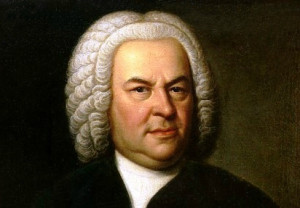On a wintry Wednesday, my scarf wrapped over my face, I walked to the university’s music building for my piano lesson. In my gloved hand, I held a book with the Bach Invention No. 1 in C Major, with its tricky piano trills. On the rhododendron bushes lining the path, the leaves hung limply.
I had studied the the Bach Invention No. 1 for almost two months. Now I wanted to impress my piano teacher, Mark Pakman, with a fluid rendition. In the second measure, I stumbled on the opening trill. In the fourth measure, my fingers choked on another trill. I threw up my hands, making a gurgling sound.
Mark pointed to the first trill in the Invention, at the top of the page. “Play this one. Slow.”
The trill’s symbol had pointed peaks, a treacherous appearance. After a few false starts, I managed to rattle it off.
“This is not a technical problem,” Mark said. “This is a musical issue.”
I looked over at him, curious as to what he meant.
He gazed at me intently. “You do not really know how those trills sound. You have to be able to hear them, note by note. You know that the notes of a trill aren’t spelled out on the page. That makes them harder to hear.” He asked me to play through the trill very slowly, listening to how the notes alternated between C and B.
The next evening, I sat on my piano bench wearing a lightweight down jacket. The temperature outside was still in the teens, and my family and I kept the thermostat low. I played the opening trill slowly but floundered.
I thought back to my high school chemistry class, the mercury thermometers, the Bunsen burners, the glass goggles. The minuscule electrons and protons we studied in the 1970s apparently now have small, delicate components, the strangely named fermions and bosons. Fermions and bosons, quick and elusive, not unlike the component notes of a piano trill.
For the rest of the practice, I sung out loud the notes of the trill, da-da-da-da, feeling foolish when first my son, then my daughter passed by. Yet after an hour of breaking down each trill into its particles, I managed to play through the Bach Invention No. 1 smoothly.
Two evenings later, I walked outside with my scarf hanging loosely over my coat. The cold streak had collapsed, and the weather was a balmy 25 degrees. My car was covered with fine snow, tiny grains of cold sugar. I thought about how I had played through the Invention once I could truly hear each of the trills’ particulate notes. At the piano, as in life, we never arrive at a definitive definition of matter; we only go deeper, hearing more keenly, savoring each mote of sound.
 look inside |
Two-Part Inventions Composed by Johann Sebastian Bach (1685-1750). Edited by Willard A. Palmer. For solo piano. Masterworks; Piano Collection. Alfred Masterwork Editions. Baroque. SMP Level 8 (Early Advanced). Collection. Standard notation, fingerings, introductory text and instructional text (does not include words to the songs). 64 pages. Published by Alfred Music (AP.604). |





0 Comments